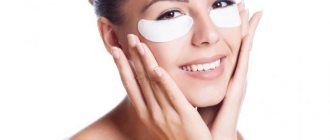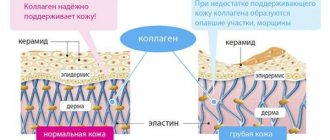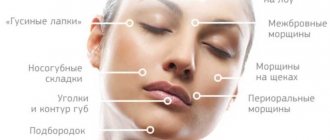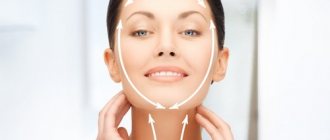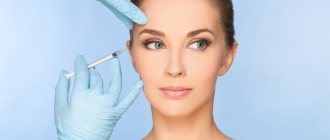From this article you will learn:
- What procedures are there for facial rejuvenation?
- What are the most effective procedures for facial rejuvenation?
- How to choose the right facial rejuvenation procedure
- How to prepare for facial rejuvenation procedures
Measures to preserve youth include quite a few methods. Procedures for facial rejuvenation are carried out both using special devices and using injections and surgical procedures. But not all women can dare to undergo plastic surgery. And everyone wants to look young and attractive. In this case, less radical methods come to the rescue, which are described in detail below.
Face Gym procedure using a Jet Peel machine
How it works: smoothes wrinkles, removes puffiness, tightens the muscular frame of the face.
This is one of the most popular procedures in the world. It is similar to Hydra Facial, but much more effective because it solves a complex of problems at once. I always recommend doing it as a base in your self-care routine and especially in combination with injections, which can cause swelling over time by accumulating water in the tissues. Jet Peel is also good because it has no contraindications and, as a result of a properly selected serum, it can be aimed at the individual needs of the client: moisturizing, evening out complexion, etc.
The procedure is performed with a special device with a nozzle that locally affects areas of the face, driving the serum deeply into the skin. A mask and patches for the area around the eyes can also be additionally used. The result is noticeable instantly: the treated area of the face is noticeably different from the one that has not yet been treated.
How many procedures need to be done : the average course is from 3 to 5 procedures over 10 days or two weeks. Then the procedure can be done once a month to maintain the effect.
When results are noticeable: immediately.
Biorevitalization
Injections of hyaluronic acid, which retains moisture in the intercellular space and is involved in skin regeneration. One of the most effective methods for improving skin quality.
A solution of hyaluronic acid is injected into the surface layer of the epidermis.
Article on the topic
A cosmetologist talks about cheap cream, rejuvenation and beauty secrets
How it works: when hyaluronic acid gets into the skin, it attracts water molecules.
Thanks to this, the subcutaneous voids are filled and wrinkles become less noticeable, and the skin structure becomes smoother and more elastic. The course is 3-5 procedures with an interval of 10-14 days, the effect lasts up to six months. Indications: dry, sagging skin, decreased tone, wrinkles.
Contraindications: pregnancy and lactation, allergy to chicken protein, inflammation at the injection site, infections, herpes and menstruation.
Complications: like all beauty injections, the injections are painful. After them, slowly dissolving papules remain on the skin, which disappear after 1-2 days.
Infrared light treatment (IPL)
How it works: rejuvenates and tightens the skin, evens out the complexion.
Another popular hardware procedure. Its effect is achieved through the influence of electromagnetic radiation (or light waves). In addition to the lifting effect, IPL makes the complexion even. We usually use one of two attachments: one helps to shrink pores and make the face cleaner, the second fights pigmentation or spots left after rashes, and removes defects associated with blood vessels.
The program can be done from the age of 25, when the first signs of aging begin. The only point: after the procedure, you should avoid sunlight. Very tanned skin is also a contraindication. In the latter case, we wait until the tan goes away.
How many procedures need to be done : from 3 to 6 procedures per month. Then - once every six months.
When the result is noticeable: after the first procedure, the skin becomes smoother.
Rehabilitation period: for two weeks it is necessary to avoid sunlight and apply products with SPF to the skin.
Indications for facial rejuvenation procedures
Around the age of 30, women experience the first signs that their skin is aging. This is mainly due to a decrease in the cells' production of collagen, hyaluronic acid and elastin. It is under their influence that our skin looks elastic and moisturized.
Threads of collagen and elastin support the skin and prevent it from sagging. The subcutaneous fat layer is reduced, tissue restoration occurs more slowly, and vascular blockage appears. As a result, the saturation of the skin with oxygen and nutrients decreases. Added to this is hormonal imbalance during the cessation of the menstrual cycle.
Common signs of aging:
- swollen facial contours;
- sagging and wrinkled skin;
- folds in the neck, cheeks, swelling of the eyelids;
- wrinkles associated with facial expressions, as well as more pronounced ones;
- pigmentation and visible spider veins;
- unnatural complexion, loose skin.
Botulinum toxin injections
How it works: smoothes out wrinkles.
A procedure familiar to everyone: botulinum toxin (or Botox) is injected into certain areas of the face to smooth out wrinkles or prevent their formation. The procedure can also be performed on very young girls under 18 years of age (but with parental permission!), if necessary. But here it is important to find a good cosmetologist who will determine a clear dose of the drug and knows a sense of proportion. And before the procedure, the specialist must talk with the client for at least 30 minutes in order to see his facial expressions, understand which facial muscles he actively uses and which he does not. For example, there are cases when a person has a large forehead, but he does not use the muscles on his forehead, which means there is no need to inject anything into this area. Or, conversely, a girl has a small forehead, but she constantly frowns.
How many procedures need to be done : I usually invite you for a second consultation after 5-6 months. This is the optimal time to check whether it is worth injecting the drug again or you can wait.
When results are noticeable: by the end of the first week.
How to choose a facial rejuvenation procedure
Before choosing one method or another, you must consult a specialist who will determine the condition of the skin, the nature of the problems, and also identify contraindications.
The cosmetologist will recommend the most effective procedure, taking into account the age and health of the patient.
Every woman has her own ways of dealing with age-related changes. But consistency and frequency are important in everything. To understand which procedures to use for facial rejuvenation, which ones are right for you, you need to try 2-3 methods on yourself. You should consult with both a cosmetologist and a dermatologist. Specialists will perform a comprehensive analysis of the skin condition, identify defects, and prescribe a suitable procedure or professional care products.
It is difficult to get lost and easily confused in the variety of services offered by modern clinics, so only an experienced doctor will help you with your choice.
In the first place in terms of effectiveness are injections of hyaluronic acid and Botox. The result appears immediately.
The effect of mesotherapy is not so immediate. The most important thing is to choose the right medicine.
Hardware methods are also popular, for example, laser rejuvenation, LPG massage, photorejuvenation, ozone therapy.
Reviews from those who have used various facial rejuvenation procedures sometimes contradict each other.
For example, the desired effect of laser methods and Elos-rejuvenation directly depends on the condition of the patient’s skin, his individual characteristics, as well as the literacy of the cosmetologist.
Women over 40 unanimously say that the most effective procedure at this age is Botox injections. These procedures have been at the top of the rankings for a long time.
But various cleanings, including chemical ones, are best used for the earliest age-related manifestations.
Don't forget that you can take care of your skin at home and keep it youthful. To do this, it is recommended to use masks of natural composition, as well as pharmacy cosmetics. But in the latter case, only a specialist can recommend which drug is right for your skin.
What is very expensive is not always effective. Still, when it comes to facial skin care, you should trust a trusted professional.
Introduction of hyaluric acid: profile and/or fillers
How it works: removes the effect of tired skin, corrects facial features.
Profiling drugs and fillers are usually made separately or combined with each other. The first is necessary in order to replenish subcutaneous fat and get rid of the effect of tired skin (usually this is typical for girls with thin faces). Afterwards we can get a baby face without a single wrinkle and with a healthy glow. Fillers are added to correct certain areas: for example, sometimes the client wants to fill out the cheekbones, highlight the angles of the lower jaw, correct the chin, or enlarge the lips. With the help of fillers, you can achieve a face that is close to the proportions of the golden ratio (the ideal relationship between the lips, nose, chin, forehead and jaw).
How many procedures need to be done : profile - once a month, fillers - once every six months or a year.
When results are noticeable: immediately.
Contour plastic
Correction of age-related changes in the facial contour using intradermal injections of filler drugs.
Contour plastic allows you to change the oval of the face, the shape of the lips, get rid of nasolabial folds, round the cheeks and lips.
Article on the topic
You can’t go “for soap”.
Top most dangerous allergens in cosmetics Indications: age-related changes in the facial contour.
But very young patients who want to change their appearance often resort to it. Contraindications: diseases associated with blood clotting disorders, taking anticoagulants, diseases in the acute stage, pregnancy and lactation, individual intolerance to injections.
Complications: there can be many of them - this is an unnatural appearance, a “mask effect”, the formation of granulomas and fibrous capsules, protrusion and migration of the gel, embolism (compression) of blood vessels. Infectious inflammations are often observed after performing the procedure at home (due to poor hygiene) or using a low-quality, uncertified drug. Costs in appearance are often caused by drug overdose - patients, in pursuit of the appearance of their dreams, hide the dates of previous procedures from the doctor or forget the name of drugs already administered. The most dangerous thing is if there is a cocktail of antagonist drugs in the skin.
Cryolipolysis
How it works: removes extra pounds, makes the skin smoother and more elastic.
An apparatus-based body contouring procedure called liposuction replacement. During the program, a device with a special attachment captures a fat fold on the body, and then it is exposed to cold. As a result, it is possible to get rid of extra pounds and make the skin more elastic. Most often, girls turn to the procedure to remove excess folds in the riding breeches and on the sides, and to reduce the fat layer in the lower abdomen, which can appear with age as a result of genetics. The main thing is that the program is completely painless and you can see positive changes in just one procedure.
How many procedures need to be done: individually, once may be enough.
When the result is noticeable: the recovery period usually lasts about two weeks, then the breakdown of adipose tissue occurs and you can see a decrease in body volume.
Sugaring
Sugar depilation is very simple. Any area of skin can be treated:
- face;
- hands;
- legs;
- armpits;
- bikini area
Cosmetologists use ready-made sugar paste, which is expensive. If you prepare it yourself, it will be cheaper.
For this you need:
- sugar - 10 tablespoons;
- water - 1 tablespoon;
- juice - half a lemon.
Mix everything and cook over low heat for 10-15 minutes. As soon as you see that the paste has become the consistency of liquid honey, you can turn it off. Let it cool slightly before using.
If it turns out a little more than you need, leave it for later. Or put it in a plastic container - you can store the paste in the refrigerator for about a month.
The depilation process itself is simple:
- Knead some paste in your hands until it becomes soft and pliable.
- Apply to the skin, move your palm, spread the paste over the skin.
- Tear off with a gentle movement.
The main thing is to tear it off against the direction of hair growth - this way depilation will be less painful and almost all hairs will be removed. The skin after this procedure remains smooth for up to 2 weeks.
Plasma therapy (PRP therapy)
How it works: restores hair and accelerates its growth.
This is the number one procedure for the prevention and treatment of hair loss. And it can be especially relevant after hair extensions, frequent coloring and hot styling. The essence of PRP therapy is the injection of a drug into the scalp, which is obtained from the client’s own blood, treated with a special activator. Plasma therapy can also be used for the face as a rejuvenating program.
How many procedures need to be done: usually one session every three to four months is enough.
When the result is noticeable: after just a few weeks, the hair looks healthier.
What cosmetic procedures can be done for pregnant and nursing mothers?
What exactly are these restrictions associated with?
- Firstly, with changes in the tissues themselves: skin, hair, nails. During pregnancy, they become looser, hypersensitive, and thinner. This is a natural process associated with gestation.
- Secondly, the pain threshold increases and procedures that previously did not cause much discomfort - hair removal of the legs, for example, turn into extremely painful ones. Against the background of pain, inflammation easily develops, which should not be allowed. In addition, sensitivity to odors also appears, which makes many cosmetic procedures impossible.
- Thirdly, the expansion of blood and lymphatic vessels significantly increases the risk of injury and bleeding.
- Fourthly, many ordinary phenomena turn into threats. Vibration, electromagnetic impulses, physical activity, even music with an abundance of too low or too high frequencies can provoke an increase in the tone of the uterus, which leads to miscarriage.
The severity of certain restrictions is related to the condition of the expectant or nursing mother, but they cannot be ignored. On the other hand, cosmetic procedures for which the listed factors are invalid are quite feasible.
The video below talks about cosmetic procedures during pregnancy:
Allowed
All cosmetic procedures can be divided into acceptable, relatively acceptable and prohibited. But in any case, before going to a beauty salon, you should consult with a leading doctor, and also repeat all tests for an allergic reaction. With hormonal changes, indicators can change noticeably.
Pregnant and nursing mothers are allowed to resort to the following procedures:
- light lymphatic drainage facial massage - it helps improve skin tone and remove swelling, which affects many expectant mothers;
- very soft superficial peeling – with fruit acids, enzymatic. At home, it is preferable to use scrubs with neutral abrasive particles: brewed ground coffee, salt, sugar;
- moisturizing masks for sensitive skin - as a rule, during pregnancy the water balance of the skin is disturbed. For the same reasons, it is recommended to switch to moisturizing creams and thermal water;
- manicure and pedicure are completely safe procedures. The only limitation here may be the smell of varnish or solvent. If you become sensitive to them, you should look for other means;
- the use of oils as creams and masks is not only allowed, but also strongly recommended. Stretch marks are almost inevitable during pregnancy. In order to at least to some extent prevent the appearance of stretch marks, it is advisable to lubricate the skin with almond, linseed, and olive oil. Moreover, this recommendation is relevant for both dry and oily skin;
- massage of the head, back, neck, arms and legs . Low-intensity procedures are selected, aimed at relaxing muscles and relieving swelling. The massage therapist must be warned about pregnancy, since many techniques are prohibited in this state. Massage for a nursing mother has fewer restrictions.
Procedures with relative contraindications
This category includes procedures that can be performed at a certain stage of pregnancy or in the absence of one or another complication. And in such cases, consultation with a doctor is necessary.
- Hair removal as such has no restrictions. But it is allowed to be performed only with a low pain threshold. The point is not even that the woman herself experiences much more severe pain than she should, but that the pain syndrome increases the tone of the uterus, and this is dangerous. In addition, due to loose skin and dilation of blood vessels, the risk of injury increases;
- depilation - with salt and sugar, is not available to everyone for the same reasons. Nursing mothers can use depilation without restrictions;
- mechanical superficial peeling – dilation of blood vessels, fragility of the walls increases the risk of injury. For short periods of time, this factor is not so great and the procedure is allowed;
- hair coloring is permitted provided that an ammonia-free product is used and the pregnant or lactating woman is not allergic to its smell;
- perm - in the first trimester is extremely undesirable due to an unexpected reaction to the odors of the substances used. In 2 and 3 it is allowed if gentle means are used. It is worth considering that the hair at this moment is very weakened and any radical procedures affect the condition of the curls much more noticeably. If a woman is already losing her hair, she should refrain from curling and coloring. During the feeding period, the restrictions are the same;
- nail extensions are permitted or allowed for the same reasons. The procedure itself does not pose any danger, but chemicals with a pungent odor are used. If a woman is not sensitive to them, then it is carried out only in a well-ventilated area;
- tattooing – the pain of the procedures increases noticeably. In addition, due to the looseness of the skin and intense lymph flow, coloring pigments are destroyed much faster, “spread”, deforming the applied pattern, so that the result is completely unattractive;
- mesotherapy based on hyaluronic acid is allowed if the woman does not have an excessive painful reaction. But here it is worth considering one more feature: artificially introduced substances during pregnancy and lactation are consumed much faster, so the result of mesotherapy does not last long;
- dry air sauna – allowed according to individual indications. In any case, a bath is an excess of heat, and it is not always useful. It is not for nothing that our ancestors got rid of unwanted children by visiting a bathhouse, so this procedure is carried out only after the doctor’s permission.
Why is it not advisable to get Botox injections during pregnancy and breastfeeding?
As Dr. Naidu explained, there have been no clinical trials examining the effects of the botulinum toxin found in Botox, Dysport, Juvo and Xeomin on pregnant women. Despite this, anecdotal evidence and clinical practice have led many experts to conclude that Botox and similar drugs administered during pregnancy will not cause harm.
Botox injections
One study showed that the botulinum toxin molecule is so heavy that it is extremely difficult for it to penetrate the placenta. In theory, it should be safe to use during pregnancy. But due to the lack of confirmed data on the absence of complications, it is better not to take risks.
Another New York-based scientist, Dr. Morgan Rabach, said he would never administer drugs like Botox to breastfeeding mothers because it is unknown whether they pass into milk. This is why such beauty injections are not given during lactation.
